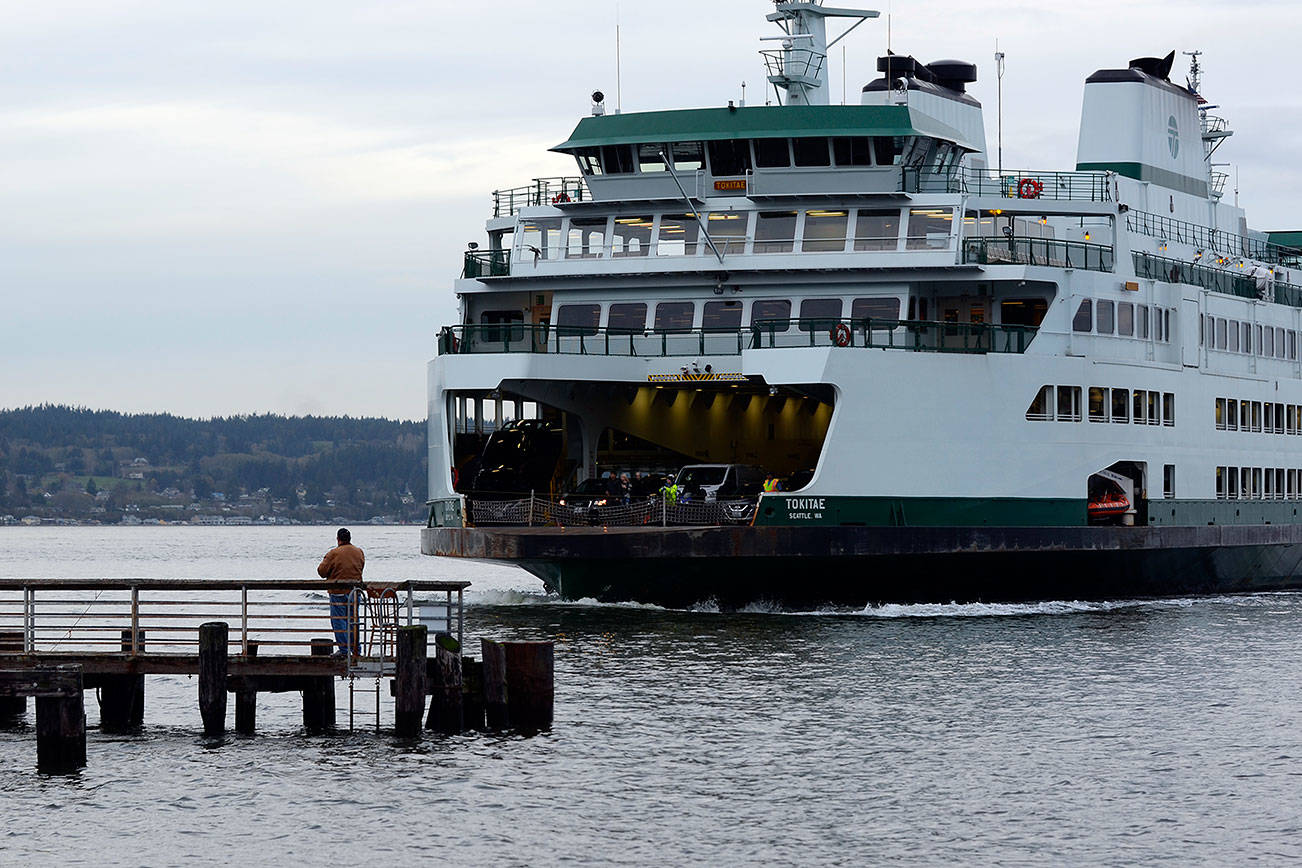In preparation for summer, Washington State Ferries is proposing schedule changes to the Clinton-to-Mukilteo ferry route.
An open house is 5:30- 7:30 p.m. Tuesday, March 21 at the Clinton Community Hall. There will be no formal presentation, but project staff will be accessible to answer questions and take feedback.
According to a draft of the proposed changes, certain sailings will be pushed back five and, in some cases, 10 minutes. For example, the 2:30 p.m. sailing from Clinton would leave at 2:35 p.m., and 3:30 p.m. sailing at 3:40 p.m. The proposed schedule will start in June, and will undergo a six-month pilot program through the fall.
The agency said Monday news release that the proposed adjustments will increase loading and unloading times. The total number of daily sailings will not change, and service won’t be pared down.
“WSF is committed to improving on-time performance on this route,” Senior Planning Manager Ray Deardorf said. “We need to make schedule adjustments to improve reliability and provide predictability for our customers, especially when customers are making local transit connections.”
The schedule changes were proposed for the route in an effort to improve “on time performance.” The current sailing schedule was designed for two 124-car Issaquah class ferries. WSF introduced the larger 144-car Tokitae in 2014, and late departures have been a regularity during the busy summer months ever since.
The late departures have led to longer waiting lines, according to the press release.
State Ferries announced last year that it would bring the Suquamish, the fourth and last budgeted Olympic-class 144-car ferry being built by the state, to run during the busy summer months. It was the result of a community-driven effort to reduce long ferry lines and loading problems associated with mismatched ferries.
Critics voiced concerns that a second larger boat wouldn’t fix the problem, but add to it.
Ian Sterling, a Ferries spokesman, said it’s too early to tell whether a second 144-car ferry will affect the schedule. It won’t hit the water until 2018. The new Mukilteo terminal is also a variable, and it’s not scheduled to open until 2019.
The proposed scheduled change is a temporary “stop-gap,” an “experiment” aimed at addressing the long lines created by the mismatched ferries.
“This is a pilot program, it’s not a permanent thing,” Sterling said.
“Everybody would agree that on-time performance is a good thing, and we’ve been slipping on that route for some time,” he added.
The proposed schedule will start in June, and will undergo a six-month pilot program through the fall.
Dave Hoogerwerf, the longtime chairman of the Clinton Advisory Committee and one of those who spearheaded the effort to unify South Whidbey in requesting the second larger ferry, said he and Island County Commissioner Helen Price Johnson have met with ferry officials to discuss the proposal. He’s not overly concerned.
“I don’t think it’s a huge impact,” Hoogerwerf said. “It’s only during the afternoon.”
He’s not convinced, however, that it’s the best course to take. The state should consider other solutions, such as streamlining traffic during loading and unloading in Mukilteo; business traffic and pedestrians are allowed to interrupt the traffic flow, he said.
As to what will happen when the Suquamish begins operating on the run, he said ferry officials he’s spoken with maintain that it won’t be a problem, especially when the new terminal opens, but that only time will tell for sure.
“Your guess is as good as mine,” he said.
What’s really needed is more data that examines the problems, and the solutions.



